Langogne in Lozère |

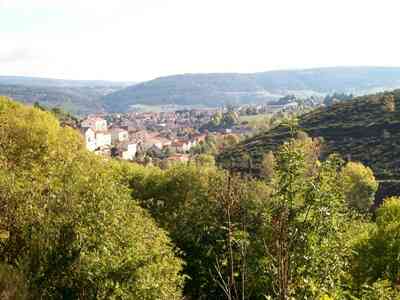 Langogne has approximately 3,500 inhabitants and is located on the shores of Lake Naussac. Langogne is known for its historical and architectural heritage, including the Romanesque church of Saint-Pierre, dating from the 11th century, as well as its castle and typical stone houses of the region. The municipality is also renowned for its outdoor activities, with mountain and forest landscapes suitable for hiking, mountain biking, and fishing. Lake Naussac also offers many water activities such as sailing, canoeing, and swimming. Langogne is a prime destination for history, heritage, and nature enthusiasts, as well as for families, with various activities for all ages.
Langogne has approximately 3,500 inhabitants and is located on the shores of Lake Naussac. Langogne is known for its historical and architectural heritage, including the Romanesque church of Saint-Pierre, dating from the 11th century, as well as its castle and typical stone houses of the region. The municipality is also renowned for its outdoor activities, with mountain and forest landscapes suitable for hiking, mountain biking, and fishing. Lake Naussac also offers many water activities such as sailing, canoeing, and swimming. Langogne is a prime destination for history, heritage, and nature enthusiasts, as well as for families, with various activities for all ages.
At the crossroads of N. 500 and D. 906, in the Allier valley, 50 km northeast of Mende. Former Benedictine convent founded in 998. A part of the fortifications remains (round corner towers) surrounding a beautiful Romanesque church. Nave with three bays, vaulted in a full arch, engaged Romanesque columns supporting the arches with historical capitals; the apse vaulted on a lower ribbed vault than the rest of the building; octagonal bell tower on the transept. Entrance portal in flamboyant style. Upon entering, to the right, below, the chapel of Notre-Dame-de-Tout-Pouvoir, a site of diocesan pilgrimage. Old Gothic bridge over the Allier. The grain hall rests on solid round pillars; it was built in 1743. The "head" of Gargantua, the friendly giant who traditionally appears on the feast day, is preserved. In front, a war memorial, opened by Maxime del Sarte.
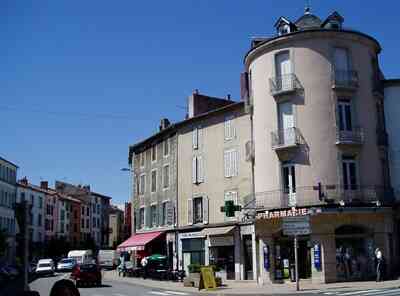 In 998, Étienne, viscount of Gévaudan, founded the church and the monastery occupied by Benedictine monks from the abbey of Saint-Chaffre. In 1568, nine thousand Protestants led by the leader Mathieu Merle pillaged the town, the church, and the monastery. In the 17th century, many communities and convents were established.
In 998, Étienne, viscount of Gévaudan, founded the church and the monastery occupied by Benedictine monks from the abbey of Saint-Chaffre. In 1568, nine thousand Protestants led by the leader Mathieu Merle pillaged the town, the church, and the monastery. In the 17th century, many communities and convents were established.
On the borders of Lozère, to which it belongs, Ardèche, and Haute-Loire, Langogne has preserved a whole set of houses that are very representative of urban architecture from the Middle Ages. These houses are mostly arranged in a circle around the church of St. Gervais and St. Protais. This Romanesque building was modified in the 15th and 17th centuries.
Since the construction of the Naussac dam in the 1970s, 3 km south of the town, Langogne has attracted many water sports enthusiasts. In the surrounding area, one can visit the gorges of Chapeauroux, a tributary of the Allier, from the village of Auroux, which is accessed from Langogne via D26, which runs along the northern shore of Lake Naussac, and then by D986.
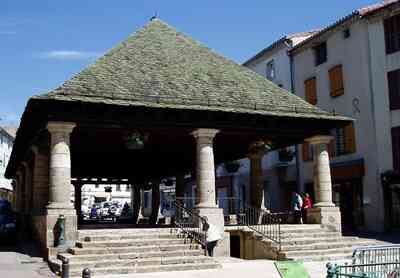 Langogne in Gévaudan
Langogne in Gévaudan
For the hurried passerby heading towards the gorges of Tarn or the shores of the Mediterranean, Langogne is simply a wide and long avenue without discovering the secret charm of old Langogne, nestled in the town center.
This original Langogne was built in the viguerie of Miliac. Its name first officially appears in the founding documents of the church and its prior. In 998, the viscount of Gévaudan, Étienne, and his wife, Angelmode, had the first church built, completed in 999. They entrusted the powerful abbey of Saint-Chaffre in Monastier-en-Velay with the establishment of a religious center.
Under the authority of twelve monks, a monastery was built. In the 11th and 12th centuries, a church in accordance with Benedictine liturgy replaced the primitive church - this is the one we see today, a Romanesque building in Burgundian style, classified as a "historical monument." One can admire a hundred capitals with varied sculptures that reveal the malevolent world of mystical terrors of the Middle Ages; beneath symbolic representations, Good and Evil confront each other - Around this religious nucleus, a small city is built, protected by ramparts, built on a circular plan, constructed at the end of the 12th century. It is still easy to imagine this Langogne occupying the "small town tower" flanked by five restored towers.
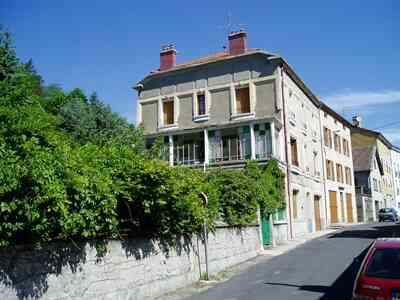 Langogne experienced the misdeeds caused during the Hundred Years' War by the English and their bandits stationed in Châteauneuf-de-Randon; then, in the early 15th century, came the struggles between Armagnacs and Burgundians, and in 1568, during the Wars of Religion, a Huguenot army, departing from Alès with 9,000 Protestants, sacked the church, completely destroying the priory that occupied the place of the Monks. This mutilated city was rebuilt around 1600; the Romanesque style was replaced by flamboyant Gothic. The collapsed ramparts allowed the city to expand outside the original walls.
Langogne experienced the misdeeds caused during the Hundred Years' War by the English and their bandits stationed in Châteauneuf-de-Randon; then, in the early 15th century, came the struggles between Armagnacs and Burgundians, and in 1568, during the Wars of Religion, a Huguenot army, departing from Alès with 9,000 Protestants, sacked the church, completely destroying the priory that occupied the place of the Monks. This mutilated city was rebuilt around 1600; the Romanesque style was replaced by flamboyant Gothic. The collapsed ramparts allowed the city to expand outside the original walls.
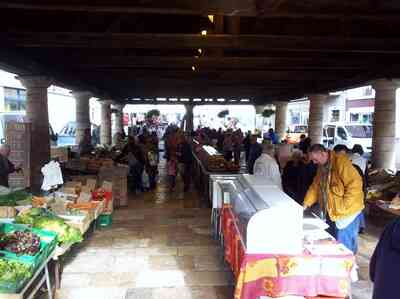 The "small town tower," despite many clumsy errors, still preserves the memory of the past. Several houses present an interesting architectural detail: a window with mullions, a portal made of dressed stones, doors topped with pediments, corbels that hide spiral staircases. Hanging on old walls, strange sculpted heads that could be Gallic, shields with dates: 1605, 1617. Outside this enclosure, the chapel of the penitents, built in the 18th century, housed the brotherhood of the penitents established in 1628.
The "small town tower," despite many clumsy errors, still preserves the memory of the past. Several houses present an interesting architectural detail: a window with mullions, a portal made of dressed stones, doors topped with pediments, corbels that hide spiral staircases. Hanging on old walls, strange sculpted heads that could be Gallic, shields with dates: 1605, 1617. Outside this enclosure, the chapel of the penitents, built in the 18th century, housed the brotherhood of the penitents established in 1628.
The Grain Hall
A passageway between Vivarais, Velay, and southern France, Langogne emerged from its walls in the 18th century. In 1743, Dom Ambroise de Fleury, prior of the city, had the Hall built, with its fourteen pillars, one of the largest preserved in France. It is a place for trading cereals, farm products, leather, local wool, in exchange for châtaignes from the Cévennes, wines, and oils from Provence and other goods from the South and the Mediterranean. Classified as a "historical monument," massive, it housed important grain transactions that took place at that time. Today, it hosts weekly markets and various traditional events.
From here, the heart of the city, small upward roads lead away. One of them, Rue Haute, was undoubtedly a link of a Celtic road leading to the oppidum of Mont Milan. It has preserved some moving memories of its past: small windows with stained glass frames, dates on the dressed stone portals: 1621, 1622, 1685, 1717, 1778, rusty signs, iron rings where mounts were tied. These were the streets of weavers, cloth merchants, carders, spinners. This textile activity has given great liveliness to this now quiet neighborhood for centuries.
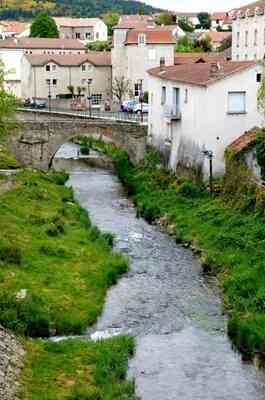 Langogne used to export burates, cadis, serges, and other wool fabrics throughout Europe. As a historical monument, a testimony to the woolen past of all of Lozère, the Calquières spinning mill is now a living museum where 19th-century machines still operate powered by water, particularly the Mull-Jenny. The Rue des Calquières, also called Rue des Moulins, included tanneries, dyers, and millers in the 18th century.
Langogne used to export burates, cadis, serges, and other wool fabrics throughout Europe. As a historical monument, a testimony to the woolen past of all of Lozère, the Calquières spinning mill is now a living museum where 19th-century machines still operate powered by water, particularly the Mull-Jenny. The Rue des Calquières, also called Rue des Moulins, included tanneries, dyers, and millers in the 18th century.
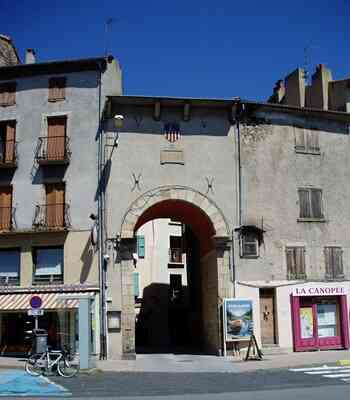 The region of Langogne, "Gateway to the county of Gévaudan, marshy heaths, expanses of rocks and fir trees, birch woods tinted with autumn's gold... small goat paths, grassy and stony, meandered and intertwined, dividing into three or four, dying away in remote marshy hollows and beginning to sprout sporadically on the hillside or at the edge of a wood... such were the characteristics of the land..."
The region of Langogne, "Gateway to the county of Gévaudan, marshy heaths, expanses of rocks and fir trees, birch woods tinted with autumn's gold... small goat paths, grassy and stony, meandered and intertwined, dividing into three or four, dying away in remote marshy hollows and beginning to sprout sporadically on the hillside or at the edge of a wood... such were the characteristics of the land..."
Notably see the 12th-century Romanesque church. And around: Lake Naussac, the magnificent Mercoire forest, and its ancient convent of nuns. The ruins of the fortress of Luc. Romanesque Church of Langogne - Chastanier Museum of Sacred Art - Calquières Spinning Mill - Museum of Sacred Art - Ecomuseum of Chastanier.
Langogne: Langougnole (the): this stream of Chapelle Graillouse suggests the toponym Langogne. It may be a name of a Gallic man "Lingo" or that of a widely used hydronym with the prefix "lin-" found in the watercourses of "Ligne" or "Lignon" that became "lingue / lingon" through inversion, and with the diminutive "òl / àla" from Latin, one would get from Occitan "lingonhòl / lingonhòla" (read Lingouniol / lingouniolo). Unless one is dealing with an elided article at the origin and subsequently agglutinated: l'Angouniol(a), from a Celtic root "anco / ango" meaning curved / winding, which became Langouniol(a) with the same Latin diminutive suffix "òl / àla" (Lengoniol in the 18th century) and meaning approximately: "the small (stream) winding."
Langouyrou (the): the name of this large stream, a tributary of the Allier, which crosses Langogne has a clear connection to the name of the town. The Lingons left their name to the region corresponding approximately to the department of Haute-Marne, a name known until recently in the form of Langogne (Lingonicus pagus). (Gaul, F. Lot). The Lingons were part of the Gallic tribes that invaded a part of Italy in the 4th century BC, along with the Senones, the Cenomans, and the Boii. Although they are mentioned in texts among the invading peoples, their location remains quite uncertain in Italy (According to Les Celtes, V. Kruta). Does the name Langogne preserve the trace of their passage in the South?
***
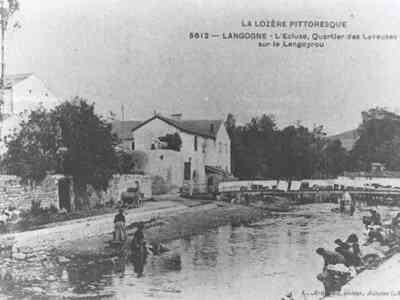 Long ago, in the picturesque village of Langogne, nestled in the heart of the Margeride mountains, lived a family of millers. The Beauchemin brothers, Baptiste and Émile, were renowned for their Herculean strength and their dedication to the milling business that thrived along the tumultuous Langouyrou.
Long ago, in the picturesque village of Langogne, nestled in the heart of the Margeride mountains, lived a family of millers. The Beauchemin brothers, Baptiste and Émile, were renowned for their Herculean strength and their dedication to the milling business that thrived along the tumultuous Langouyrou.
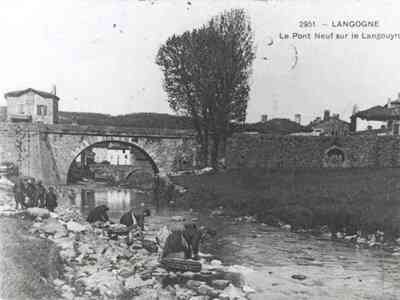 Baptiste, the eldest, was a colossus with a tender heart. His imposing build concealed a sensitive and generous soul. He handled sacks of flour as if they were feathers and ensured that the mill wheel turned continuously. His booming laughter echoed throughout the valley, and the village children gathered around him to listen to his stories of elves and fairies. Émile, on the other hand, was more taciturn. His sun-weathered face and winds told of hours spent plowing fields and repairing the mechanisms of the mill. He was the man in the shadows, the one who ensured that the gears never got stuck, even during the floods of the Langouyrou. His knotted arms wielded the shovel and pickaxe with formidable precision.
Baptiste, the eldest, was a colossus with a tender heart. His imposing build concealed a sensitive and generous soul. He handled sacks of flour as if they were feathers and ensured that the mill wheel turned continuously. His booming laughter echoed throughout the valley, and the village children gathered around him to listen to his stories of elves and fairies. Émile, on the other hand, was more taciturn. His sun-weathered face and winds told of hours spent plowing fields and repairing the mechanisms of the mill. He was the man in the shadows, the one who ensured that the gears never got stuck, even during the floods of the Langouyrou. His knotted arms wielded the shovel and pickaxe with formidable precision.
One day, a terrible storm struck Langogne. The waters of the Langouyrou swelled, threatening to engulf the mill. Baptiste and Émile stood shoulder to shoulder, facing the fury of the torrent. Their powerful arms pushed back the waves, while their laughter rang out as a challenge to nature itself. Legend has it that on that day, the two brothers almost fused into one being. Their combined strength repelled the waters, saving the mill and the entire village. Since then, it is said that the Langouyrou carries within it the echo of their laughter and the strength of their brotherly bond.
Even today, when the sun sets behind Beauregard hill, the inhabitants of Langogne gather by the river. They listen to the murmur of the Langouyrou and remember the two strong brothers, guardians of the mill, whose legend endures through generations.
Former holiday hotel with a garden along the Allier, L'Etoile Guest House is located in La Bastide-Puylaurent between Lozere, Ardeche, and the Cevennes in the mountains of Southern France. At the crossroads of GR®7, GR®70 Stevenson Path, GR®72, GR®700 Regordane Way, GR®470 Allier River springs and gorges, GRP® Cevenol, Ardechoise Mountains, Margeride. Numerous loop trails for hiking and one-day biking excursions. Ideal for a relaxing and hiking getaway.
Copyright©etoile.fr